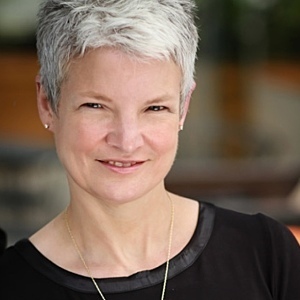"Now" and "Next" Practices that Highlight How Work Is Changing

In this article, Vice President of Performance Acceleration at The Marcus Buckingham Company, Amy Leschke-Kahle, explores how work is changing.
Are you tired of hearing about how work is changing yet? Hopefully not, because there's plenty more change to come — and much of it will be the source of long-term success.
Immersed in the field of performance for decades, ADP has a unique perspective on what makes high-performance organizations operate proficiently. We know which approaches are enabling great work in the current setting, but the changes we're navigating as a result of the pandemic make it clear that we can't just cling to today's best practices.
We need to be proactive in making the transition from "now" practices to "next" practices, and the following principles illustrate why this is the case.
The ability to learn is more important than knowing
Understanding the requirements for roles and hiring individuals who can meet those requirements are core practices for recruiting and HR professionals, and that won't change. However, focusing primarily on the value of prior achievements and outcomes alone are no longer sufficient in a world that's shifting so frequently and so quickly.
We should adopt the "next" practice of prioritizing an individual's appetite and ability to learn new skills, implement new practices and adopt new mindsets.
I see this a lot in the technology space, where an organization might hire a programmer because they know an in-demand language like Python. But who knows what programming language or even low-code no-code applications will be most in demand five years from now? The talent you hire today needs to be able to adapt, learn and execute in ways that show they can keep up with how work is changing in your field.
Dynamic teams will outperform hierarchical ones
Org charts are an ever-present structural component of every organization. While they provide clarity around formal reporting structures they can also act as false boundaries that restrict collaboration and create unnecessary process. Org charts and the hierarchies they document are important but we must also facilitate an environment where teams of all types flourish and thrive. The fast pace of change during COVID-19 showed us that the most effective teams are those that operate as dynamic, adaptable networks of individuals, not rigid structures of higher-ups and subordinates.
This is not new information at ADP. We've known for a long time that the best work happens in complex and connected networks, not hierarchies. In fact, in 2018, we found that people who said they were on teams were 2.3 times more likely to be "fully engaged" than those who said they weren't, which was true across all countries studied. Hierarchies and dynamic teams are not exclusive, independent frameworks. Both are critical to getting work done effectively, efficiently and collaboratively.
Tech is an enabler, not just a precursor
For much of the story of people and business, technology has been a precursor to innovation. After all, when a new technology comes into being, it often creates the possibility of doing something new. For example, we had to have Internet access before we could have Internet apps.
However, the "next" practice that is upon us is to treat technology not only as a factor that makes our work possible but also as an enabler of more efficient and dynamic approaches to work in a changing business landscape. Technology can now support unprecedented connectivity, visibility and coordination at all levels of an organization, and these factors are more critical to business success than ever in an era of remote work. Embracing technology solutions that facilitate greater communication and cooperation between team members will remain crucial as employees and organizations settle into a more flexible, hybrid work environment.
The ongoing evolution of work
There is no "new normal." The progression of work we're experiencing is a natural result of operating in a constantly changing environment. Technology, customer preferences and personal values are all developing in new directions, so why shouldn't the way we work also change? Far from an inconvenience, this is the essential path that businesses must walk to stay relevant.
Generate meaningful engagement data to inform business decisions, allocate resources and support your people. Learn about StandOut® Powered by ADP®.



